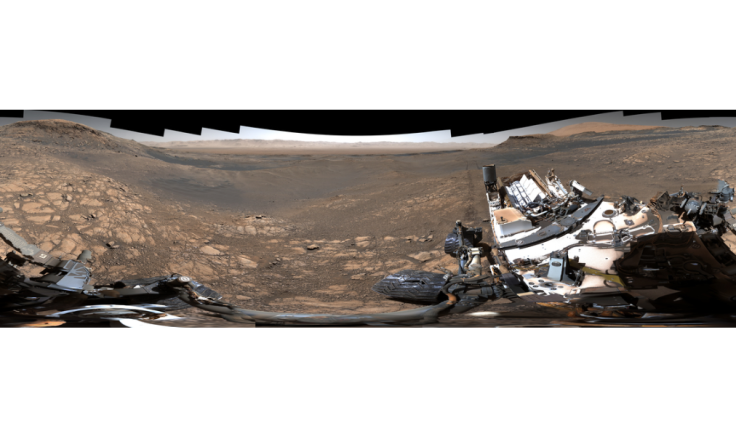Curiosity Rover's 1.8-Billion-Pixel Image Of Mars Is Its Highest-Resolution Panorama Yet
KEY POINTS
- Curiosity rover captured its highest-resolution panorama of the Martian surface yet
- The images were taken during Thanksgiving while waiting for the mission team to return
- The panorama provides a 360 view of Glen Torridon on Mount Sharp
NASA’s Curiosity rover captured two panoramas towards the end of 2019, one of which is its highest-resolution panorama yet of the Martian surface. Both images are composed of over 1,000 images that were taken over the course of several days.
1.8-Billion-Pixel Panorama
While waiting for the mission team to return from the Thanksgiving holiday, Curiosity rover had the rare opportunity to take images of its surroundings from the same vantage point over several days. Between Nov. 24 to Dec. 1 when it only had a few tasks, the rover’s Mast Camera (Mastcam) used its telephoto lens to produce the 1.8-billion-pixel panorama while the medium-angle lens produced another, lower resolution 650-million-pixel panorama that includes the rover’s deck and arm.
The individual images were taken each day for four days between noon and 2 p.m. to ensure consistent lighting. Over the months that followed, the images were carefully assembled to create the panoramas.
"While many on our team were at home enjoying turkey, Curiosity produced this feast for the eyes," Curiosity project scientist Ashwin Vasavada said. "This is the first time during the mission we've dedicated our operations to a stereo 360-degree panorama."
Both panoramas are showing Glen Torridon, the region on Mount Sharp that Curiosity is exploring.
How’s this for 2020 vision? Over the holidays, I took a series of high-res photos of my hometown on #Mars. This panorama is made up of a crisp 1.8 billion pixels. It’s my most detailed view to date.
— Curiosity Rover (@MarsCuriosity) March 4, 2020
Zoom in: https://t.co/F2VAjvAVVV pic.twitter.com/nTMhOTx2Di
Mars Rovers
As of the writing of this article, NASA's Curiosity rover has spent 2,694 sols on Mars and traveled 13.62 miles (21.92 kilometers) on its surface. It has so far taken a total of 654,661 raw images, many of which were used to create panoramas of the Martian surface.
Curiosity is so far NASA's largest and most capable rover ever sent to Mars and, its main mission is to answer whether Mars ever had the right environmental conditions to support small life forms.
The next Mars rover is scheduled for launch between July 17 and Aug. 5, 2020, from Cape Canaveral Air Force Station in Florida and, is expected to land on Mars by February 2021. There, the Mars 2020 rover will build on Curiosity’s mission by not only searching for signs of past habitable conditions but also searching for actual signs of past microbial life.

© Copyright IBTimes 2025. All rights reserved.






















